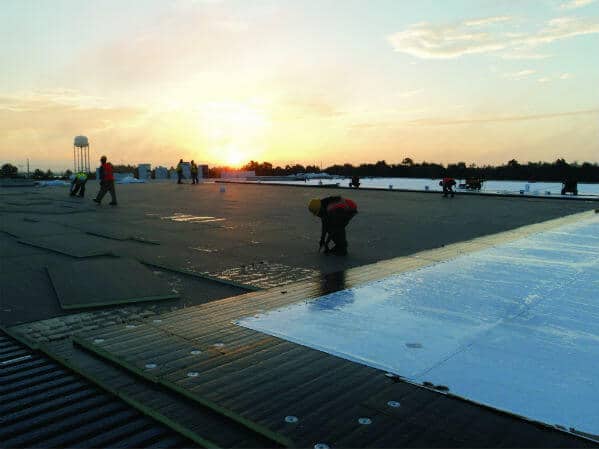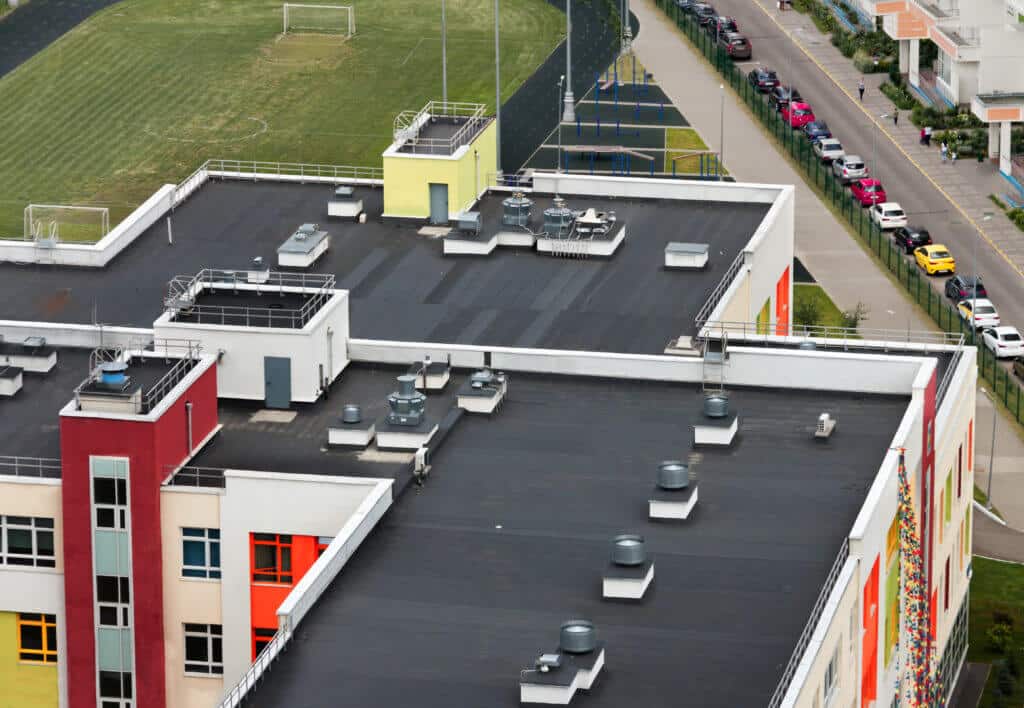Here Comes the Sun: UV Light, Thickness, and Your Roof’s Lifespan


The lifespan of a building’s roof is determined largely by two factors—its thickness and its exposure to sunlight.
Size Matters
Single-ply roofs are mainly offered in three levels of thickness: 45 mils, 60 mils, and 80-90 mils. As a general rule, the thicker the roof, the longer it will last. This is true regardless of the composition of the roofing material. Forty-five-mil roofs were once the industry standard; over the past few years, however, the 60-mils standard has moved to center stage.
Depending on outside conditions, a 60-mils roof can be expected to last between 22 and 27 years, but five years is a lot of wiggle room, and the variable most likely to swing the roof’s projected lifespan toward one end of that spectrum or the other is sunlight.
Sun Exposure
Your roof’s lifespan is directly proportional to the level and frequency of the ultraviolet beating that it takes. Remember what the sun did to George Hamilton’s skin?
Well, that’s what it does to roofs.
Let’s say you build a TPO roof in Ohio, which is apparently where clouds around the world all have vacation timeshares. That roof is going to last longer. The same TPO roof in Southern Arizona—where cactus plants have to carry parasols—has a shorter expected lifespan.
What You, the Owner, Can Do
There are online resources that building owners can use to help them gauge which roof is right for them, but the reality is, preconceived notions often lead to bad choices (owners in Florida, for example, may only consider the state’s plentiful sunshine without factoring in the negating factor of its frequent rainfall).
The regional expertise of a reputable, trustworthy contractor is far more valuable than any online UV index or your own assumptions about the climate.
Perhaps most importantly, however, is basic maintenance. Walk around the roof periodically—especially after a storm. Clean the gutters. Clear the drains. This routine work can extend the life of your roof by 25 or even 50 percent — and it costs far less than a new roof.
The obvious drawback of a thicker roof is the higher cost of using more material. This is where the reputation and expertise of your contractor is so important. Your contractor’s experience is your best weapon against choosing the wrong type of roof—or a roof that is too thick or too thin—in the wrong climate.
LIKE WHAT YOU JUST READ?
Sign up for our newsletter to get fresh articles, updates and more!
The Keys to Great Customer Service at Mid-South Roof Systems
We know that customers want to be treated like a person instead of a number, especially if they encounter a complex and potentially costly commercial roofing problem. We understand that you could be facing a stressful situation when you call the Mid-South Roof Systems teams for assistance. Whether you need help taking care of a…
Maintaining Commercial Roof Drainage Systems
Most homeowners know that gutters and downspouts are the drainage system for their home’s roof. A gutter/downspout system is standard on most residences. Commercial roofs, however, employ a variety of methods to drain the water from the roof surface. Commercial roof drainage systems are usually one of three main types. Here’s a rundown of those…


